Flexible Power System Defense Strategies in an Isolated Microgrid System with High Renewable Power Generation
Abstract
1. Introduction
2. Proposed Preventive Control Strategy
2.1. Step 1: Real-Time Data from SCADA
2.2. Step 2: Forecast the Frequency Nadir
2.3. Step 3: Selection of Control Methods
3. Establishment of the Database Used in the Proposed Preventive Control Strategy
3.1. Step 1
3.2. Step 2
3.3. Step 3
4. Establishment of Forecasting Modules for Frequency Nadir and Frequency Support Capability
4.1. Frequency Nadir Forecasting Module
4.2. Frequency Support Capability of BESS, DLC and EDRP
5. Cost Analysis for the Proposed Preventive Control Methods
5.1. Cost Analysis for the GR Method
5.2. Cost Analysis for the BESS Method
5.3. Cost Analysis for the DLC and EDRP Methods
6. Testing System
7. Accuracy of the Forecasting Modules Used in the Proposed Preventive Control Strategy
8. Results of Cost Analysis
8.1. The GR Method
8.2. The BESS Method
8.3. The EDRP Method
8.4. The DLC Method
9. Capacity Requirements of the Proposed Preventive Control Strategy
10. Conclusions
Author Contributions
Funding
Conflicts of Interest
References
- Wu, Y.K.; Ye, G.T.; Tang, K.T. Preventive control strategy for an island power system that considers system security and economics. IEEE Trans. Ind. Appl. 2017, 53, 5239–5251. [Google Scholar] [CrossRef]
- Wu, Y.-K. Frequency Stability for an Island Power System: Developing an Intelligent Preventive-Corrective Control Mechanism for an Offshore Location. IEEE Ind. Appl. Mag. 2017, 23, 74–87. [Google Scholar] [CrossRef]
- Sigrist, L.; Rouco, L.; Echavarren, F.M. A review of the state of the art of UFLS schemes for isolated power systems. Int. J. Electr. Power Energy Syst. 2018, 99, 525–539. [Google Scholar] [CrossRef]
- Wu, Y.K.; Tang, K.T. Frequency Support by BESS—Review and Analysis. Energy Procedia 2019, 156, 187–191. [Google Scholar] [CrossRef]
- Tan, J.; Zhang, Y. Coordinated Control Strategy of a Battery Energy Storage System to Support a Wind Power Plant Providing Multi-Timescale Frequency Ancillary Services. IEEE Trans. Sustain. Energy 2017, 8, 1140–1153. [Google Scholar] [CrossRef]
- Greenwood, D.; Lim, K.; Patsios, C.; Lyons, P.; Lim, Y.; Taylor, P. Frequency response services designed for energy storage. Appl. Energy 2017, 203, 115–127. [Google Scholar] [CrossRef]
- Serban, I.; Marinescu, C. Control Strategy of Three-Phase Battery Energy Storage Systems for Frequency Support in Microgrids and with Uninterrupted Supply of Local Loads. IEEE Trans. Power Electron. 2013, 29, 5010–5020. [Google Scholar] [CrossRef]
- Wu, Y.-K.; Ye, G.-T.; Chang, L.-T.; Hsieh, T.-Y.; Jan, B.-S. Capacity determination of a dynamic energy storage system in an island power system with high renewable energy penetration. In Proceedings of the 2017 International Conference on Applied System Innovation (ICASI), Sapporo, Japan, 13–17 May 2017; pp. 1698–1701. [Google Scholar]
- Wu, Y.K.; Tang, K.T. Frequency support by demand response—Review and analysis. Energy Procedia 2019, 156, 327–331. [Google Scholar] [CrossRef]
- Deng, R.; Yang, Z.; Chow, M.-Y.; Chen, J. A Survey on Demand Response in Smart Grids: Mathematical Models and Approaches. IEEE Trans. Ind. Inform. 2015, 11, 1. [Google Scholar] [CrossRef]
- Nikzad, M.; Mozafari, B. Reliability assessment of incentive- and priced-based demand response programs in restructured power systems. Int. J. Electr. Power Energy Syst. 2014, 56, 83–96. [Google Scholar] [CrossRef]
- Alasseri, R.; Tripathi, A.; Rao, T.J.; Sreekanth, K. A review on implementation strategies for demand side management (DSM) in Kuwait through incentive-based demand response programs. Renew. Sustain. Energy Rev. 2017, 77, 617–635. [Google Scholar] [CrossRef]
- Zhang, Q.; Li, J. Demand response in electricity markets: A review. In Proceedings of the 2012 9th International Conference on the European Energy Market, Florence, Italy, 10–12 May 2012; pp. 1–8. [Google Scholar]
- Gu, C.; Liu, L.; Zhang, T.; Zheng, Y. Demand response model and impact studies based on bidirectional interactive of information and electrical energy. In Proceedings of the 2012 China International Conference on Electricity Distribution, Shanghai China, 5–6 September 2012; pp. 1–6. [Google Scholar]
- Eid, C.; Codani, P.; Perez, Y.; Reneses, J.; Hakvoort, R. Managing electric flexibility from Distributed Energy Resources: A review of incentives for market design. Renew. Sustain. Energy Rev. 2016, 64, 237–247. [Google Scholar] [CrossRef]
- Aalami, H.; Yousefi, G.R.; Moghadam, M.P. Demand response model considering EDRP and TOU programs. In Proceedings of the 2008 IEEE/PES Transmission and Distribution Conference and Exposition, Chicago, IL, USA, 21–24 April 2008; pp. 1–6. [Google Scholar]
- Rahmani-Andebili, M.; Abdollahi, A.; Moghaddam, M.P. An investigation of implementing Emergency Demand Response Program (EDRP) in Unit Commitment problem. In Proceedings of the IEEE PES General Meeting, Detroit, MI, USA, 24–28 July 2011; pp. 24–29. [Google Scholar]
- Lian, B.; Sims, A.; Yu, D.; Wang, C.; Dunn, R.W. Optimizing LiFePO4 Battery Energy Storage Systems for Frequency Response in the UK System. IEEE Trans. Sustain. Energy 2016, 8, 385–394. [Google Scholar] [CrossRef]
- Świerczyński, M.; Stroe, D.I.; Stan, A.I.; Teodorescu, R.; Sauer, D.U. Selection and performance degradation modeling of LiMo2/Li4Ti5O12 and LiFePO4/C battery cells as suitable energy storage systems for grid integration with wind power plants: An example for the primary frequency regulation service. IEEE Trans. Sustain. Energy 2014, 5, 90–101. [Google Scholar] [CrossRef]
- Chalise, S.; Sternhagen, J.; Hansen, T.M.; Tonkoski, R. Energy management of remote microgrids considering battery lifetime. Electr. J. 2016, 29, 1–10. [Google Scholar] [CrossRef]
- Such, M.C. Operation and Control Strategies for Battery Energy Storage Systems to Increase Penetration Levels of Renewable Generation on Remote Microgrids. Master’s Thesis, Sch. of Science in Engineering, The University of Texas at Austin, Austin, TX, USA, 2013. [Google Scholar]
- Yeh, C.C.; Chen, C.S.; Ku, T.T.; Lin, C.H.; Hsu, C.T.; Chang, Y.R.; Lee, Y.D. Design of special protective system for an offshore island with high PV penetration. IEEE Trans. Ind. Appl. 2017, 53, 901–907. [Google Scholar] [CrossRef]
- Asl, S.A.F.; Gandomkar, M.; Nikoukar, J. Optimal protection coordination in the micro-grid including inverter-based distributed generations and energy storage system with considering grid-connected and islanded modes. Electr. Power Syst. Res. 2020, 184, 106317. [Google Scholar] [CrossRef]
- Abazari, A.; Monsef, H.; Wu, B. Coordination strategies of distributed energy resources including FESS, DEG, FC and WTG in load frequency control (LFC) scheme of hybrid isolated micro-grid. Int. J. Electr. Power Energy Syst. 2019, 109, 535–547. [Google Scholar] [CrossRef]
- Barra, P.; Coury, D.; Fernandes, R. A survey on adaptive protection of microgrids and distribution systems with distributed generators. Renew. Sustain. Energy Rev. 2020, 118, 109524. [Google Scholar] [CrossRef]
- Mohamed, E.; Magdy, G.; Shabib, G.; Elbaset, A.A.; Mitani, Y.; Baset, A.A. Digital coordination strategy of protection and frequency stability for an islanded microgrid. IET Gener. Transm. Distrib. 2018, 12, 3637–3646. [Google Scholar] [CrossRef]
- Fathima, A.H.; Palanisamy, K. Battery energy storage applications in wind integrated systems—A review. In Proceedings of the 2014 International Conference on Smart Electric Grid (ISEG), Vaddeswaram, Guntur, 19–20 September 2014; pp. 1–8. [Google Scholar]
- Son, D.H.; Nam, S.R.; Karlsson, D. Development of PSS/E dynamic model for controlling battery output to improve frequency stability in power systems. Int. J. Electr. Power 2017, 11, 462–466. [Google Scholar]
- Falcão, J.; Castro, R.; De Jesus, J.F. Frequency control during transients in offshore wind parks using battery energy storage systems. J. Mar. Eng. Technol. 2016, 15, 1–12. [Google Scholar] [CrossRef]
- Castillo, A.; Gayme, D.F. Grid-scale energy storage applications in renewable energy integration: A survey. Energy Convers. Manag. 2014, 87, 885–894. [Google Scholar] [CrossRef]
- Padron, S.; Hernandez, M.; Falcon, A. Reducing under-frequency load shedding in isolated power systems using neural networks. IEEE Trans. Power Syst. 2016, 31, 63–71. [Google Scholar] [CrossRef]
- Abdelwahid, S.; Babiker, A.; Eltom, A.; Kobet, G. Hardware Implementation of an Automatic Adaptive Centralized Underfrequency Load Shedding Scheme. IEEE Trans. Power Deliv. 2014, 29, 2664–2673. [Google Scholar] [CrossRef]
- Xu, X.; Zhang, H.; Li, C.; Liu, Y.; Li, W.; Terzija, V. Optimization of the event-driven emergency load-shedding considering transient security and stability constraints. IEEE Trans. Power Syst. 2016, 32, 2581–2592. [Google Scholar] [CrossRef]
- Wu, Y.-K.; Ye, G.-T.; Hsieh, T.-Y.; Jan, B.-S. Economic dispatch in an offshore island system with high wind power penetration. In Proceedings of the 2016 IEEE PES Asia-Pacific Power and Energy Engineering Conference (APPEEC), Xi’an, China, 25–28 October 2016; pp. 374–378. [Google Scholar]
- Rohit, A.K.; Devi, K.P.; Rangnekar, S. An overview of energy storage and its importance in Indian renewable energy sector. J. Energy Storage 2017, 13, 10–23. [Google Scholar] [CrossRef]
- Chen, H.; Cong, T.N.; Yang, W.; Tan, C.; Li, Y.; Ding, Y. Progress in electrical energy storage system: A critical review. Prog. Nat. Sci. 2009, 19, 291–312. [Google Scholar] [CrossRef]
- May, G.J.; Davidson, A.; Monahov, B. Lead batteries for utility energy storage: A review. J. Energy Storage 2018, 15, 145–157. [Google Scholar] [CrossRef]
- Vazquez, S.; Lukic, S.M.; Galvan, E.; Franquelo, L.G.; Carrasco, J.M. Energy Storage Systems for Transport and Grid Applications. IEEE Trans. Ind. Electron. 2010, 57, 3881–3895. [Google Scholar] [CrossRef]
- Paterakis, N.G.; Erdinç, O.; Catalao, J.P.S. An overview of Demand Response: Key-elements and international experience. Renew. Sustain. Energy Rev. 2017, 69, 871–891. [Google Scholar] [CrossRef]
- Laboratories, K. Comparison of California Investor-Owned-Utility (IOU) Direct Load Control (DLC) Programs; Final Report; KEMA: Arnhem, The Netherlands, 2010. [Google Scholar]
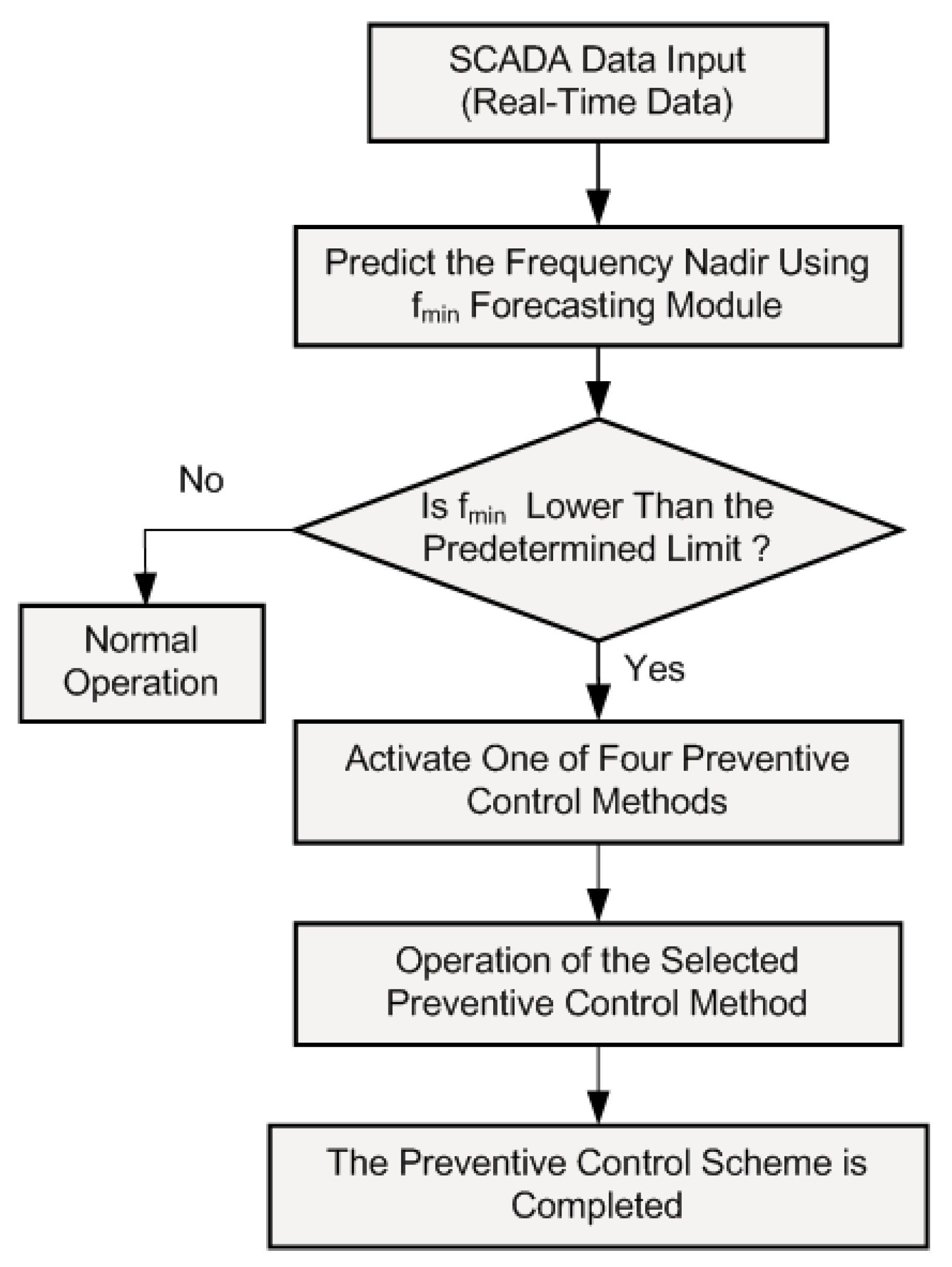

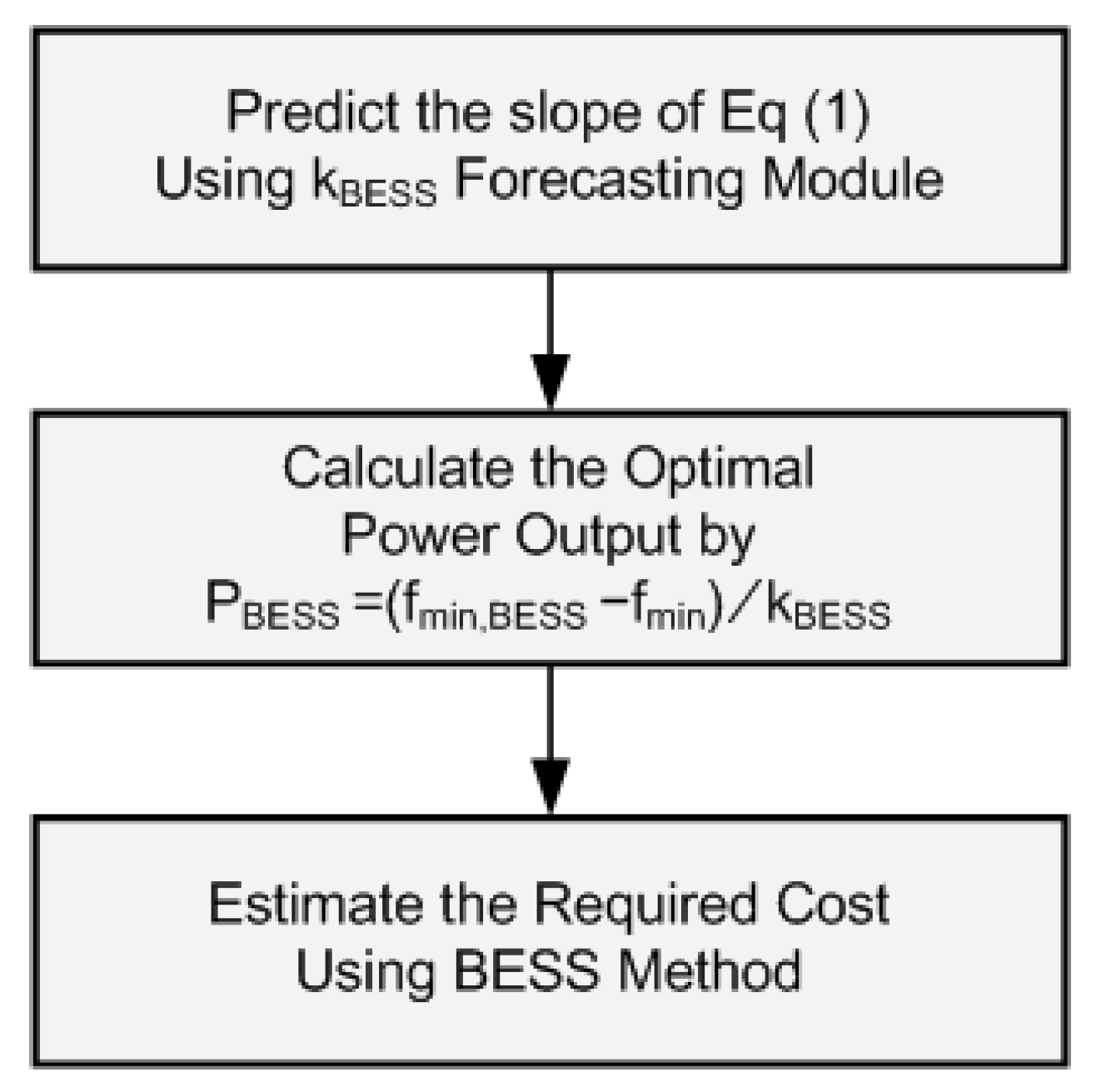
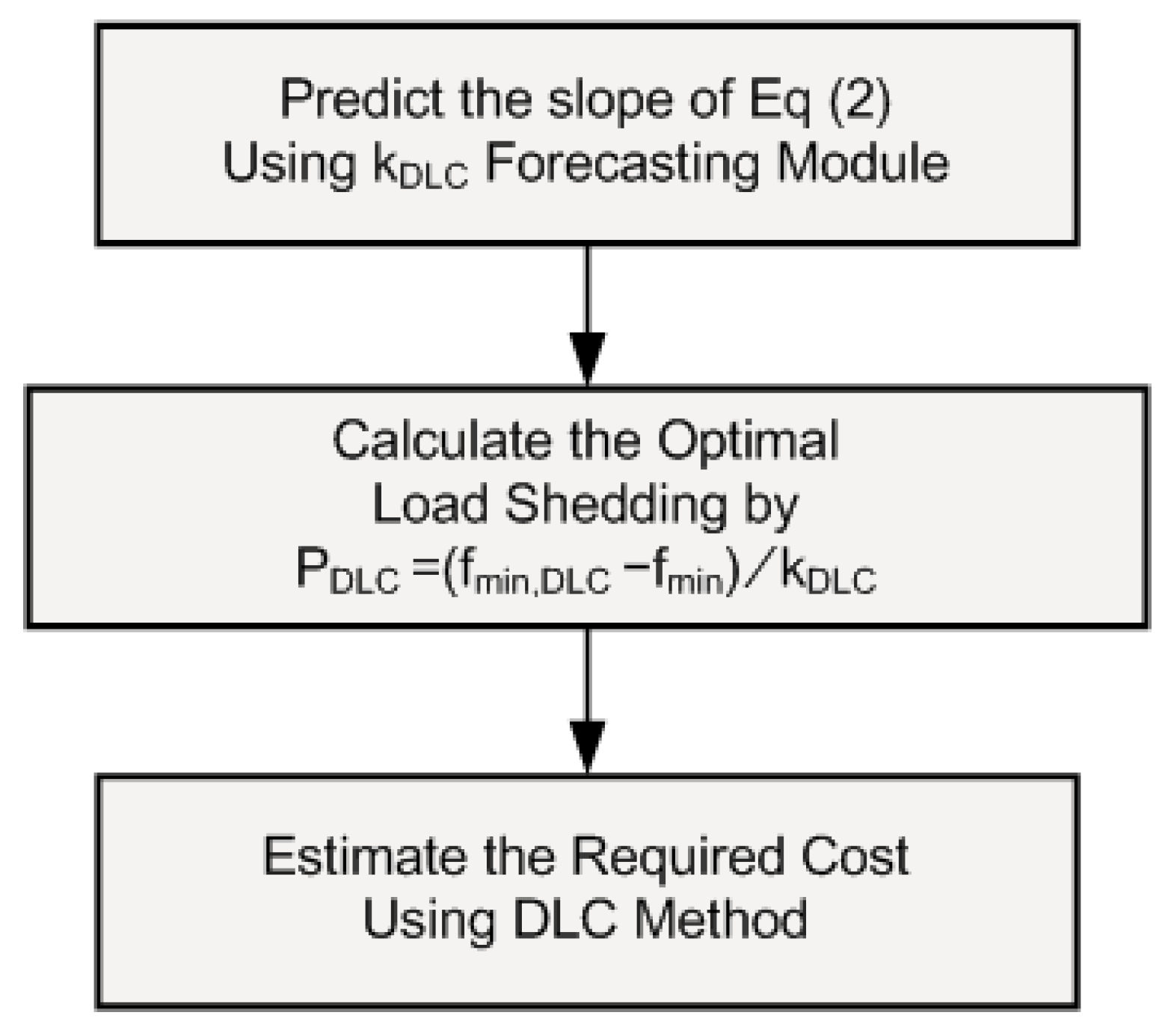
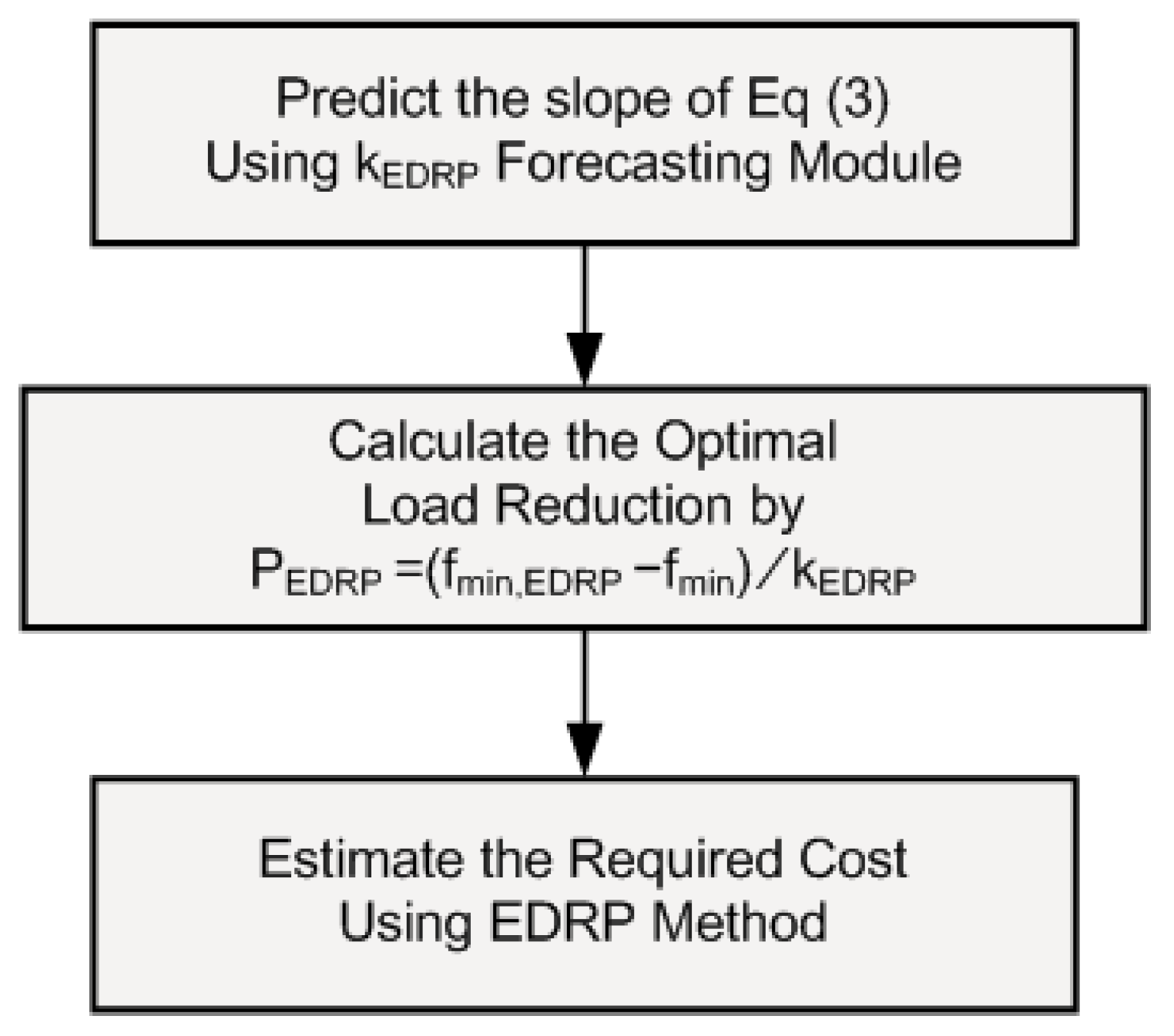
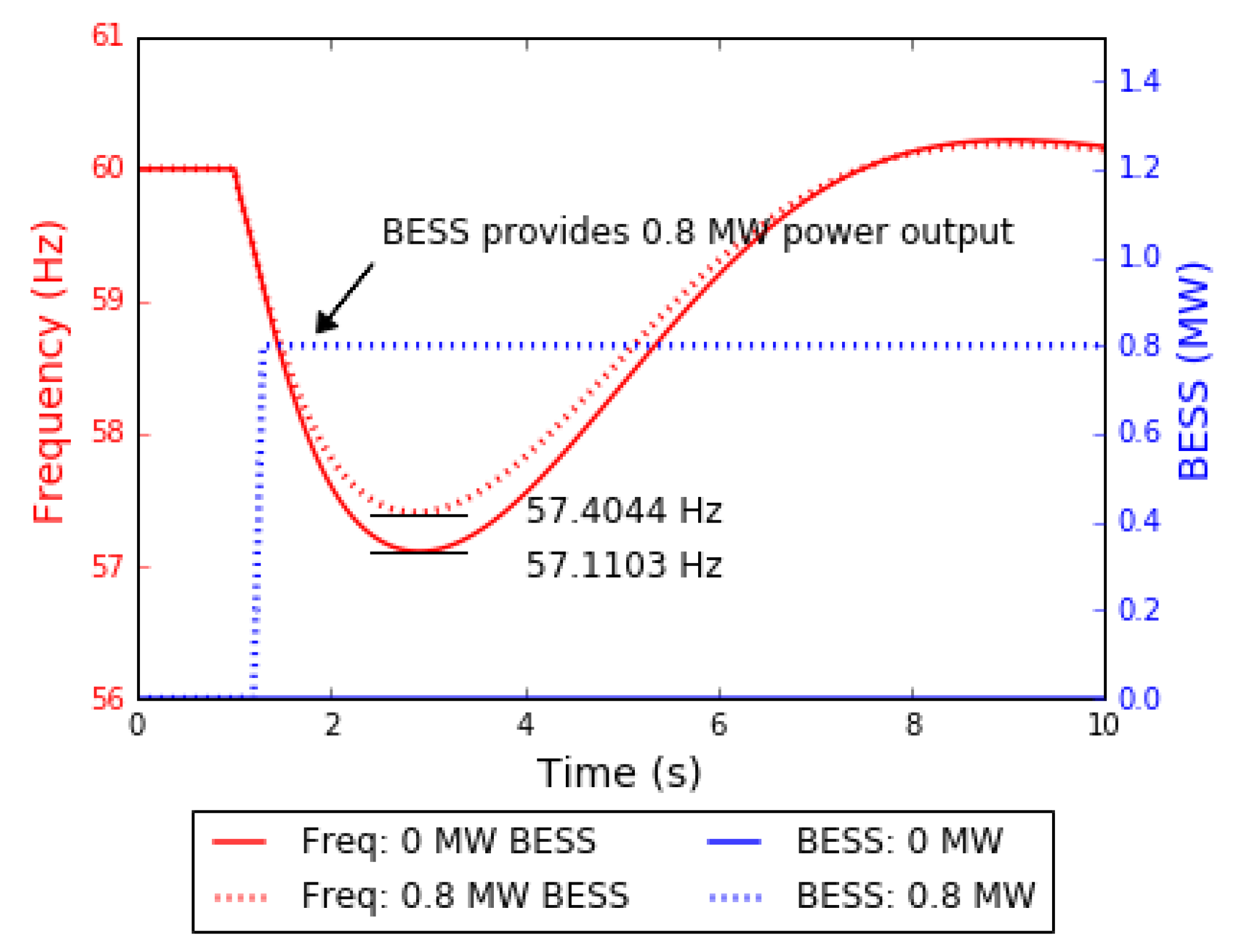
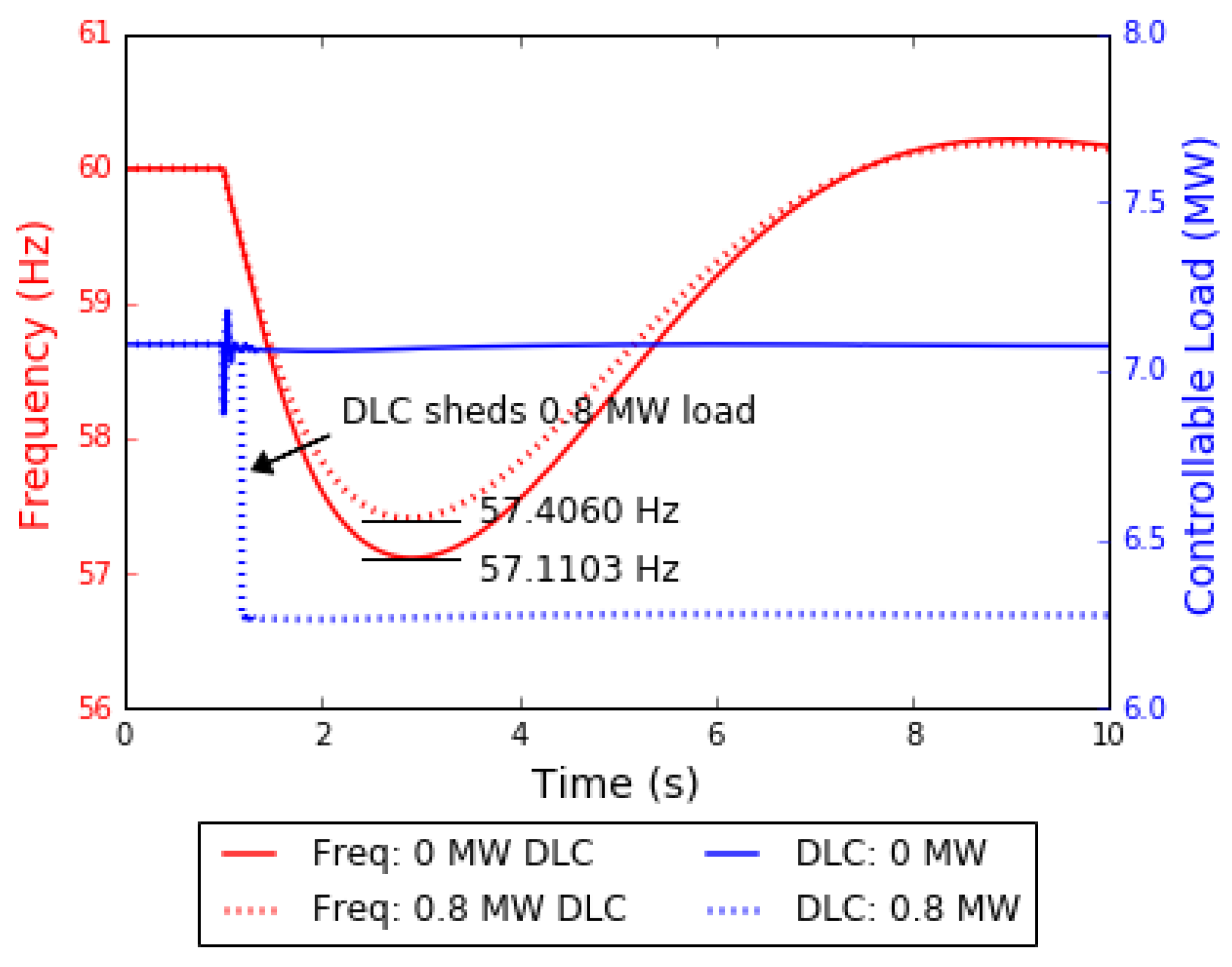

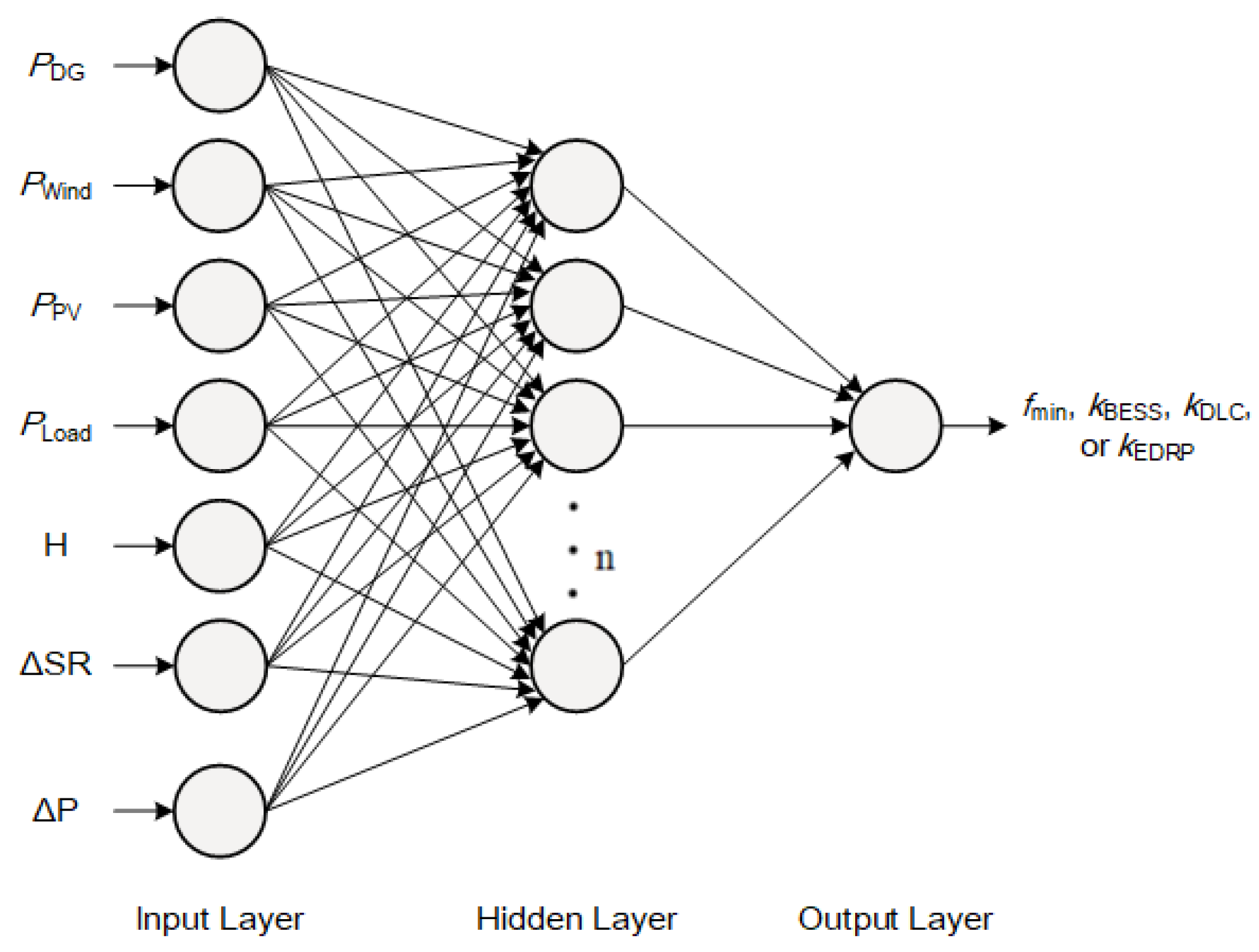
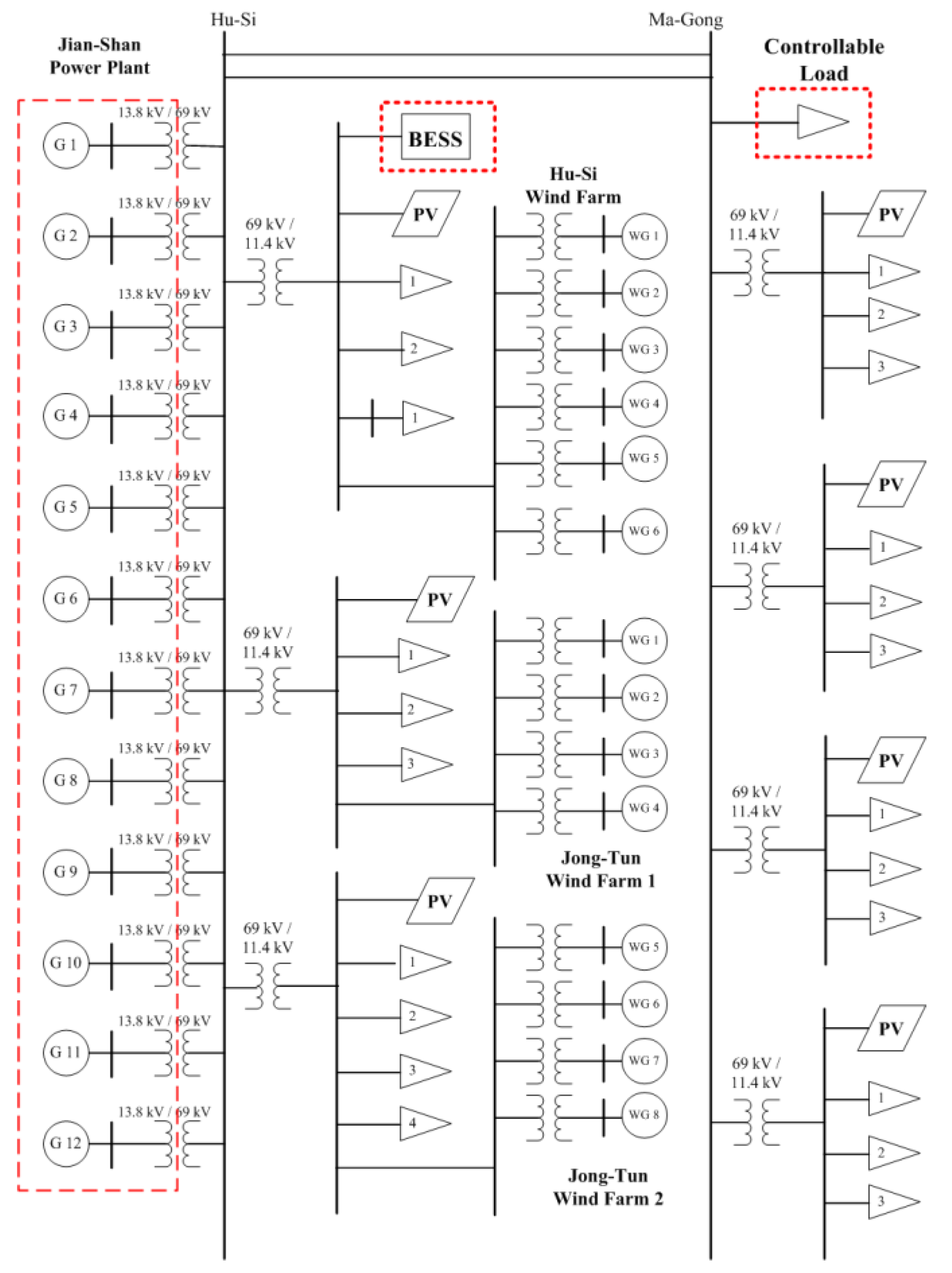
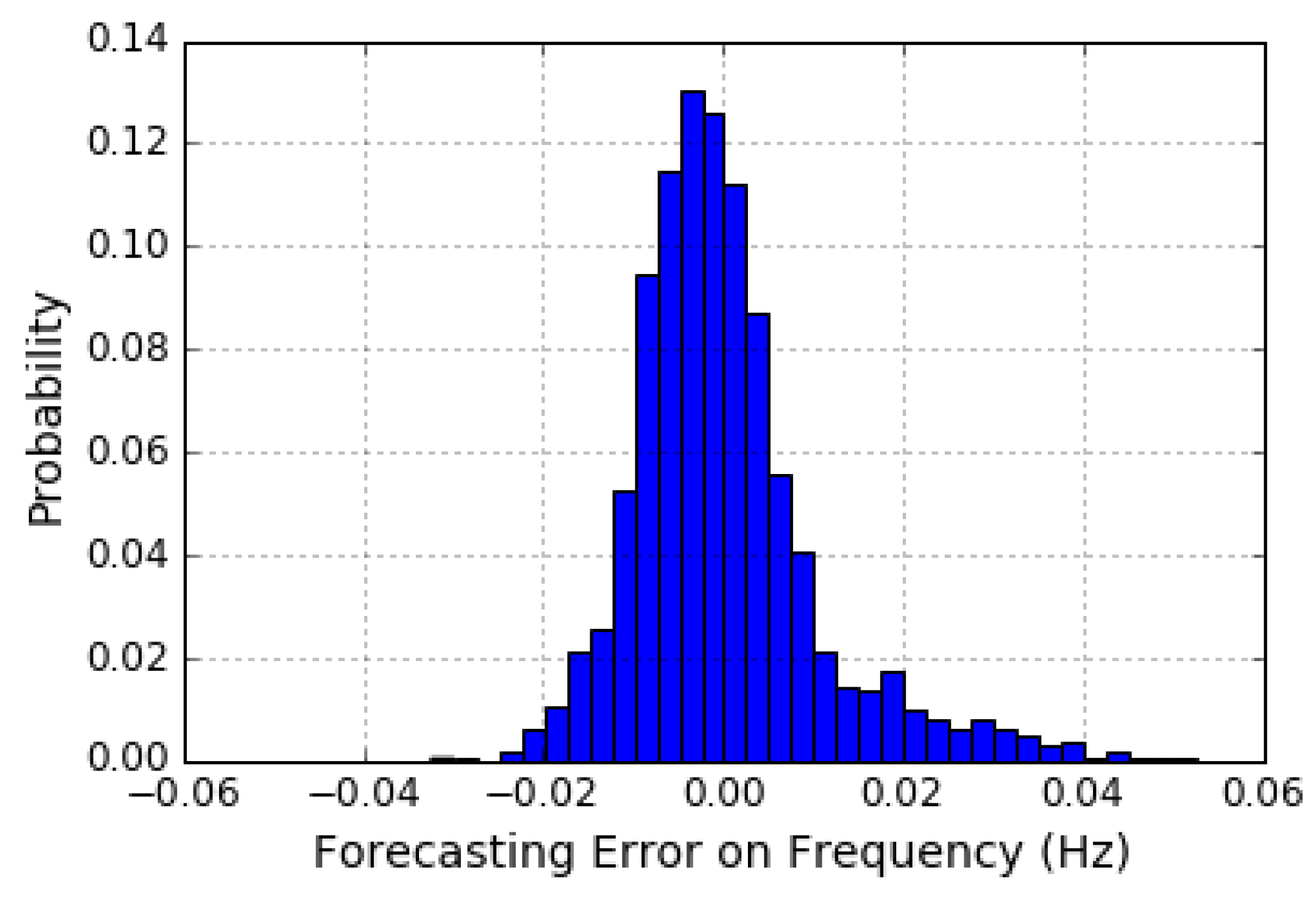
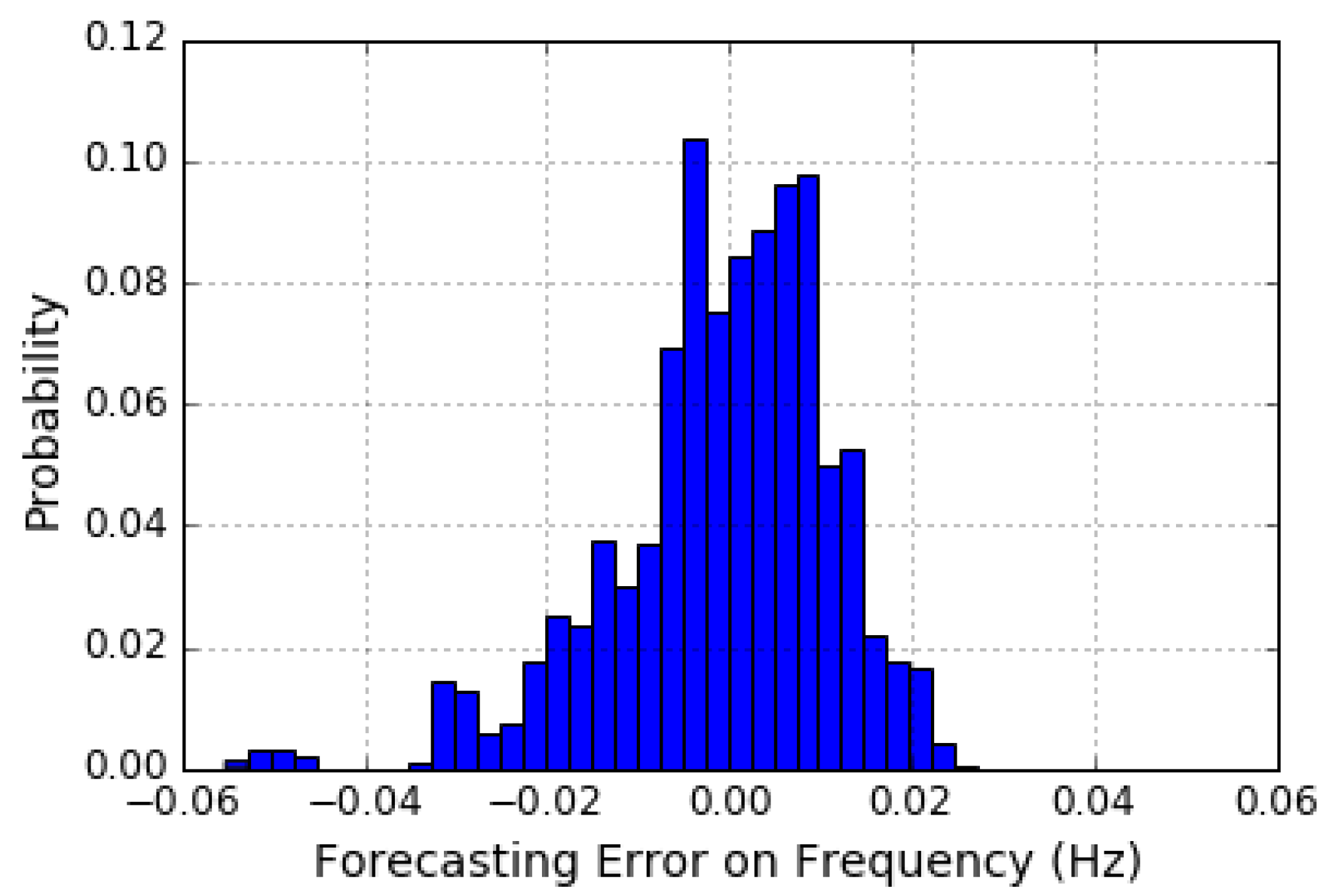
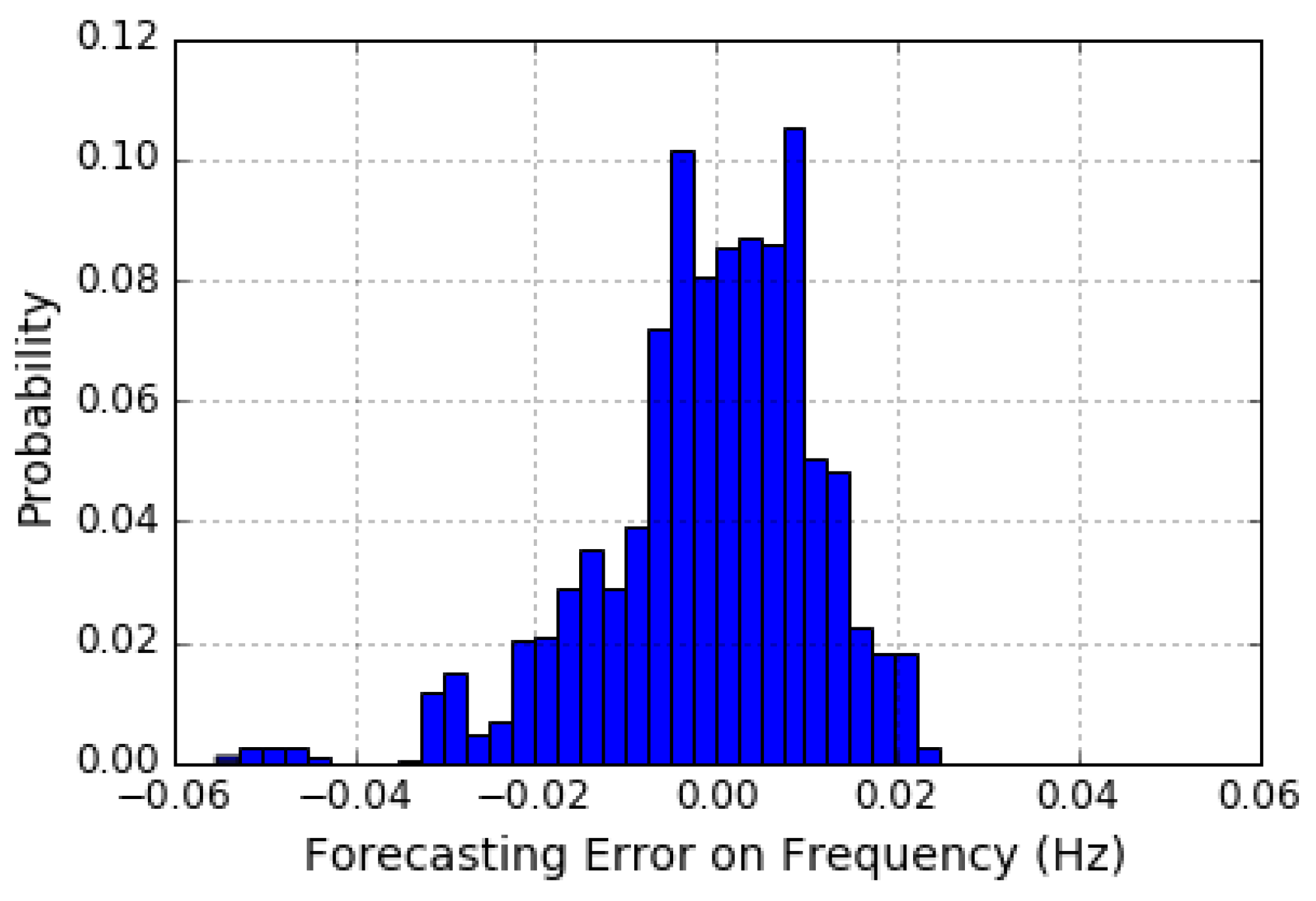

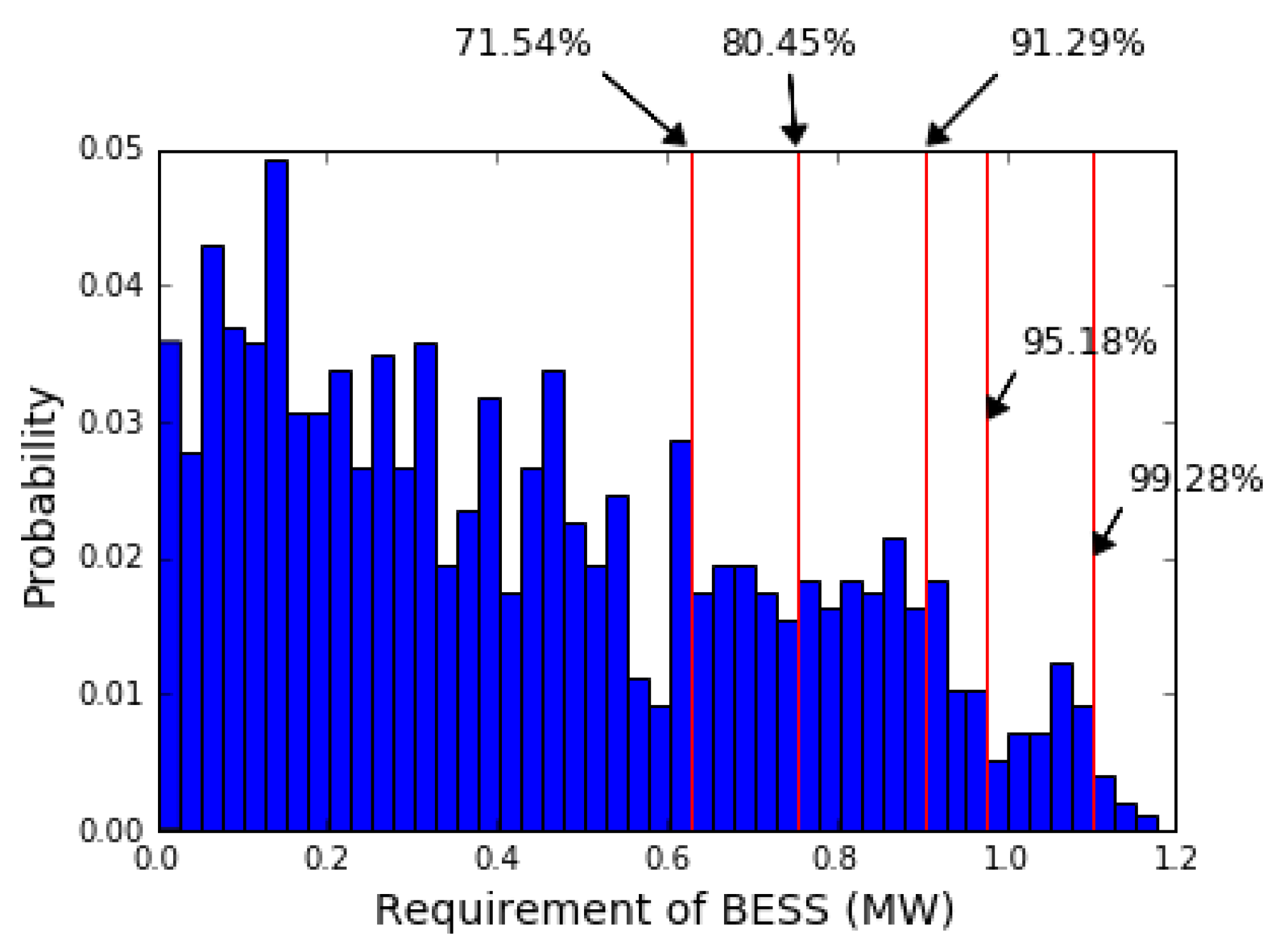
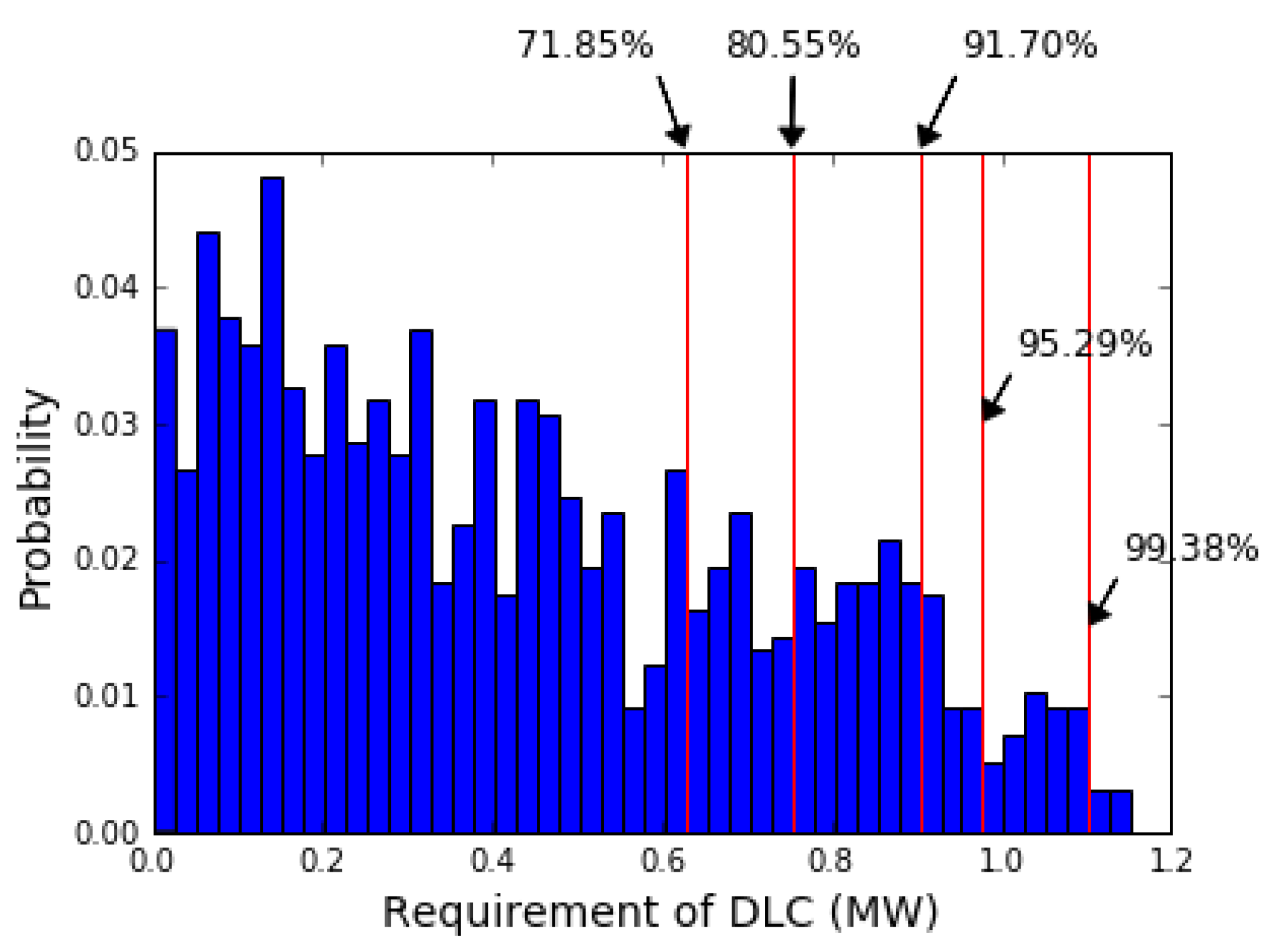
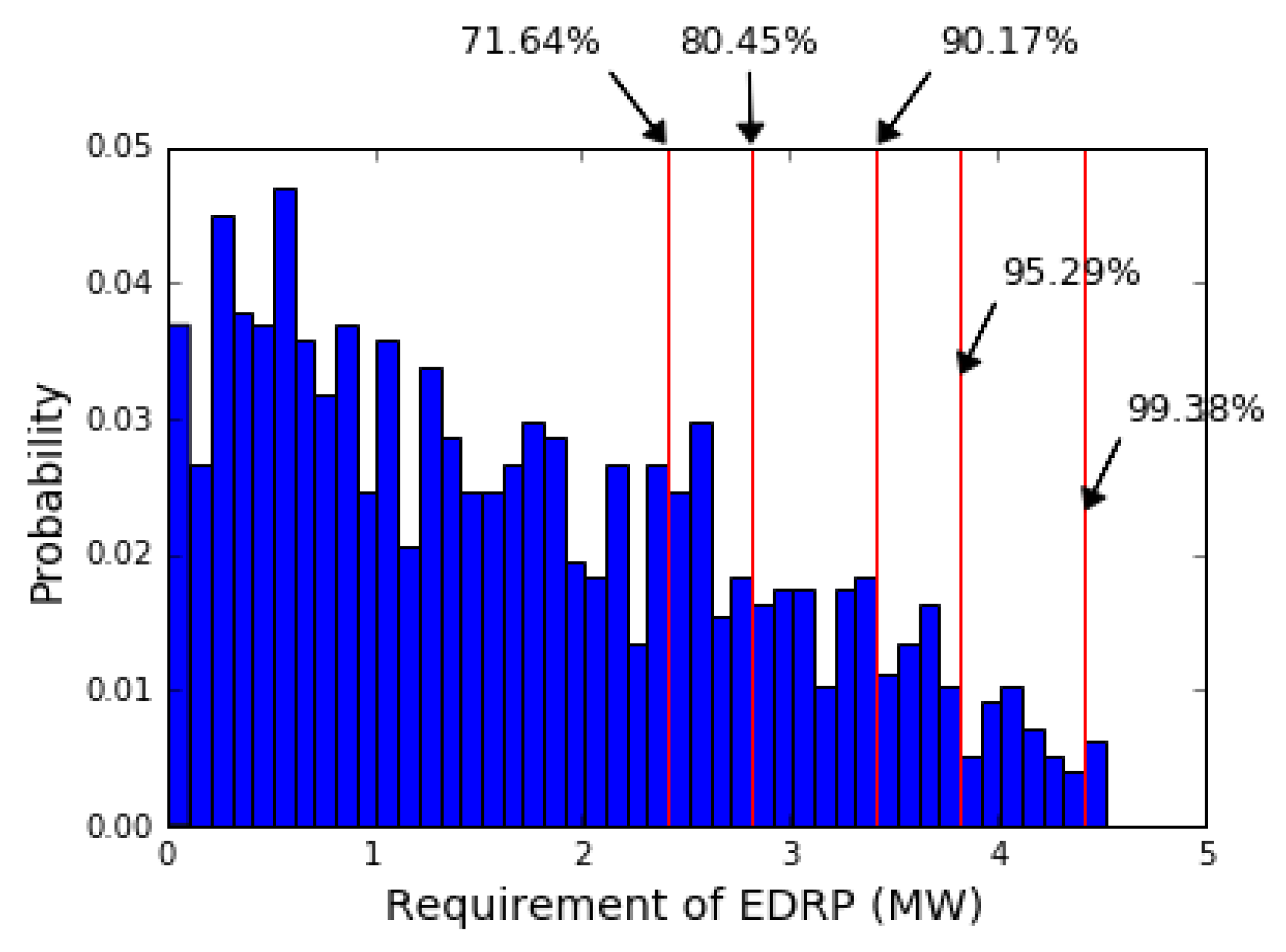
| BESS Output (MW) | Frequency Nadir (Hz) | Frequency Support (Hz/0.1 MW BESS) |
|---|---|---|
| 0 | 57.1103 | - |
| 0.1 | 57.1471 | 0.0368 |
| 0.2 | 57.1839 | 0.0368 |
| 0.3 | 57.2206 | 0.0367 |
| 0.4 | 57.2574 | 0.0368 |
| 0.5 | 57.2941 | 0.0367 |
| 0.6 | 57.3309 | 0.0368 |
| 0.7 | 57.3676 | 0.0367 |
| 0.8 | 57.4044 | 0.0368 |
| 0.9 | 57.4410 | 0.0366 |
| 1.0 | 57.4779 | 0.0369 |
| 1.1 | 57.5146 | 0.0367 |
| 1.2 | 57.5513 | 0.0367 |
| 1.3 | 57.5880 | 0.0367 |
| 1.4 | 57.6246 | 0.0366 |
| 1.5 | 57.6613 | 0.0367 |
| DLC Load Shedding (MW) | Frequency Nadir (Hz) | Frequency Support (Hz/0.1 MW DLC) |
|---|---|---|
| 0 | 57.1103 | - |
| 0.1 | 57.1472 | 0.0369 |
| 0.2 | 57.1841 | 0.0369 |
| 0.3 | 57.2211 | 0.0370 |
| 0.4 | 57.2581 | 0.0370 |
| 0.5 | 57.2950 | 0.0369 |
| 0.6 | 57.3320 | 0.0370 |
| 0.7 | 57.3690 | 0.0370 |
| 0.8 | 57.4060 | 0.0370 |
| 0.9 | 57.4430 | 0.0370 |
| 1.0 | 57.4799 | 0.0369 |
| 1.1 | 57.5169 | 0.0370 |
| 1.2 | 57.5539 | 0.0370 |
| 1.3 | 57.5909 | 0.0370 |
| 1.4 | 57.6279 | 0.0370 |
| 1.5 | 57.6648 | 0.0369 |
| EDRP Load Reduction (MW) | Frequency Nadir (Hz) | Frequency Support (Hz/0.3 MW EDRP) |
|---|---|---|
| 0 | 57.1103 | - |
| 0.3 | 57.1369 | 0.0266 |
| 0.6 | 57.1631 | 0.0262 |
| 0.9 | 57.1896 | 0.0265 |
| 1.2 | 57.2160 | 0.0264 |
| 1.5 | 57.2421 | 0.0261 |
| 1.8 | 57.2685 | 0.0264 |
| 2.1 | 57.2947 | 0.0262 |
| 2.4 | 57.3205 | 0.0258 |
| 2.7 | 57.3467 | 0.0262 |
| 3.0 | 57.3724 | 0.0257 |
| 3.3 | 57.3984 | 0.0260 |
| 3.6 | 57.4243 | 0.0259 |
| 3.9 | 57.4499 | 0.0256 |
| 4.2 | 57.4758 | 0.0259 |
| 4.5 | 57.5015 | 0.0257 |
| Notification | Demand-Charge Discount (NTD/MW per month) | Energy-Charge Discount (NTD/MWh) |
|---|---|---|
| 15-min ahead | 96,000 | 10,000 |
| 30-min ahead | 86,000 | 10,000 |
| 1-h ahead | 78,000 | 10,000 |
| 2-h ahead | 72,000 | 10,000 |
| Time | Time | ||
|---|---|---|---|
| 00:00 | 57.5570 | 12:00 | 57.5340 |
| 01:00 | 57.7212 | 13:00 | 57.3750 |
| 02:00 | 57.7152 | 14:00 | 57.1687 |
| 03:00 | 57.7438 | 15:00 | 58.4231 |
| 04:00 | 57.7707 | 16:00 | 58.3611 |
| 05:00 | 57.8670 | 17:00 | 58.3210 |
| 06:00 | 58.0051 | 18:00 | 58.2368 |
| 07:00 | 57.6361 | 19:00 | 58.2798 |
| 08:00 | 57.3031 | 20:00 | 58.1963 |
| 09:00 | 57.0152 | 21:00 | 58.0321 |
| 10:00 | 57.3148 | 22:00 | 57.5174 |
| 11:00 | 57.404 | 23:00 | 57.9393 |
| Time | Consumed Fuel (Before) (L/Hour) | Consumed Fuel (After) (L/Hour) | Change of Fuel Cost (NTD/Hour) | Start-Up Cost (NTD) |
|---|---|---|---|---|
| 08:00 | 7887 | 7869 | −450 | 0 |
| 09:00 | 8633 | 8412 | −5525 | 2000 |
| 10:00 | 8192 | 8123 | −1725 | 2000 |
| 13:00 | 7892 | 7878 | −350 | 0 |
| 14:00 | 8330 | 8095 | −5875 | 2000 |
| Time | Battery Cycle Cost (NT$ per cycle) | |
|---|---|---|
| 08:00 | 0.6281 | 0.6281 |
| 09:00 | 0.7531 | 0.7531 |
| 10:00 | 0.9031 | 0.9031 |
| 13:00 | 0.9781 | 0.9781 |
| 14:00 | 1.1031 | 1.1031 |
| Time | Demand Charge Discount (NT$ per month) | Energy Charge Discount (NT$/Hour) | |
|---|---|---|---|
| 08:00 | 1.1476 | 110,169 | 11,476 |
| 09:00 | 4.5629 | 438,038 | 45,629 |
| 10:00 | 1.0614 | 101,894 | 10,614 |
| 13:00 | 0.3049 | 29,270 | 3049 |
| 14:00 | 2.7579 | 264,758 | 27,579 |
| Time | |
|---|---|
| 08:00 | 0.2812 |
| 09:00 | 1.1157 |
| 10:00 | 0.2466 |
| 13:00 | 0.0716 |
| 14:00 | 0.6625 |
| Confidence LEVEL (%) | Required BESS (MW) | Required DLC (MW) | Required EDRP (MW) |
|---|---|---|---|
| 70–72 | 0.6281 | 0.6281 | 2.4135 |
| 80–81 | 0.7531 | 0.7531 | 2.8135 |
| 90–92 | 0.9031 | 0.9031 | 3.4135 |
| 95–96 | 0.9781 | 0.9781 | 3.8135 |
| 99–99.5 | 1.1031 | 1.1031 | 4.4135 |
© 2020 by the authors. Licensee MDPI, Basel, Switzerland. This article is an open access article distributed under the terms and conditions of the Creative Commons Attribution (CC BY) license (http://creativecommons.org/licenses/by/4.0/).
Share and Cite
Wu, Y.-K.; Tang, K.-T.; Lin, Z.K.; Tan, W.-S. Flexible Power System Defense Strategies in an Isolated Microgrid System with High Renewable Power Generation. Appl. Sci. 2020, 10, 3184. https://doi.org/10.3390/app10093184
Wu Y-K, Tang K-T, Lin ZK, Tan W-S. Flexible Power System Defense Strategies in an Isolated Microgrid System with High Renewable Power Generation. Applied Sciences. 2020; 10(9):3184. https://doi.org/10.3390/app10093184
Chicago/Turabian StyleWu, Yuan-Kang, Kuo-Ting Tang, Zheng Kuan Lin, and Wen-Shan Tan. 2020. "Flexible Power System Defense Strategies in an Isolated Microgrid System with High Renewable Power Generation" Applied Sciences 10, no. 9: 3184. https://doi.org/10.3390/app10093184
APA StyleWu, Y.-K., Tang, K.-T., Lin, Z. K., & Tan, W.-S. (2020). Flexible Power System Defense Strategies in an Isolated Microgrid System with High Renewable Power Generation. Applied Sciences, 10(9), 3184. https://doi.org/10.3390/app10093184






